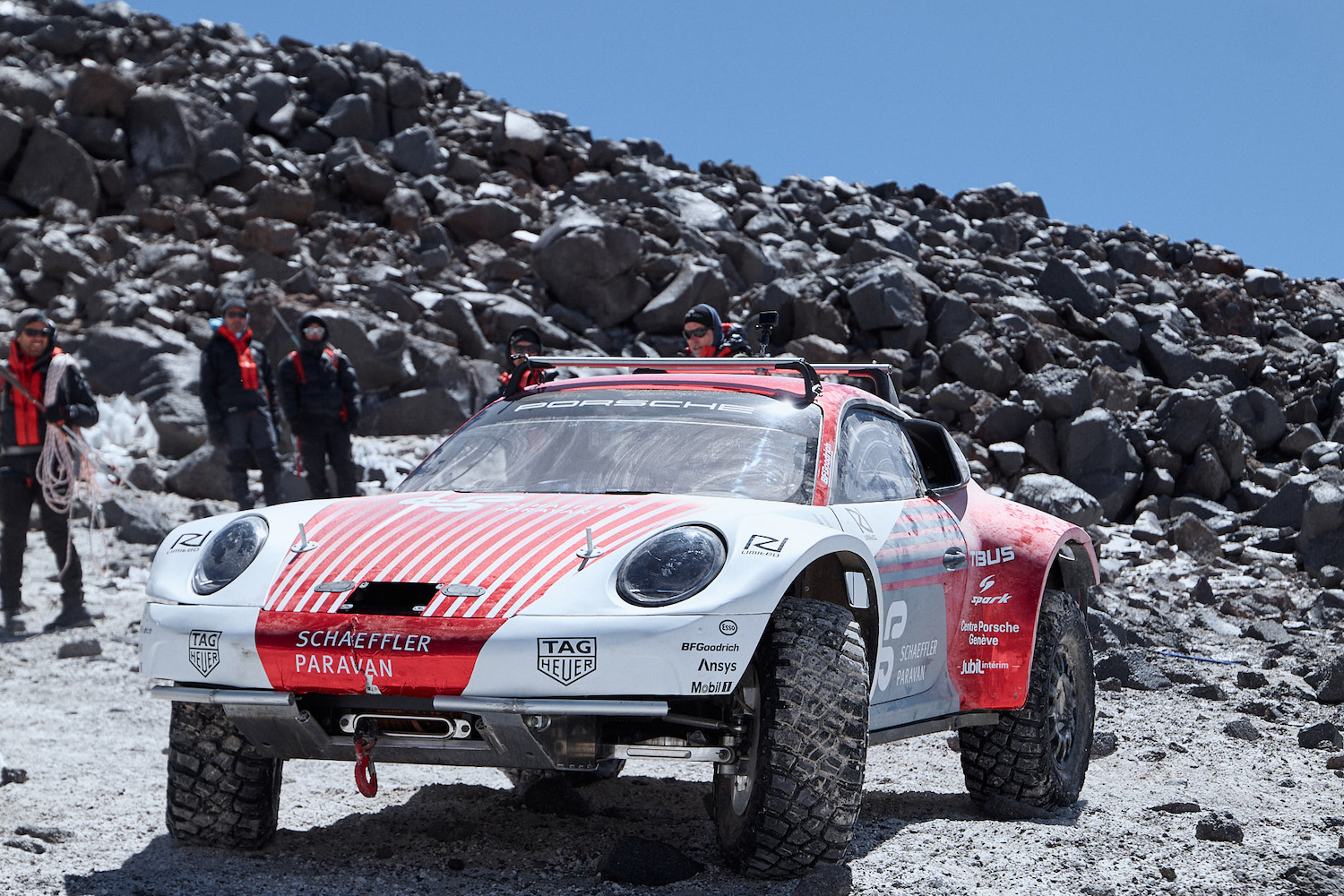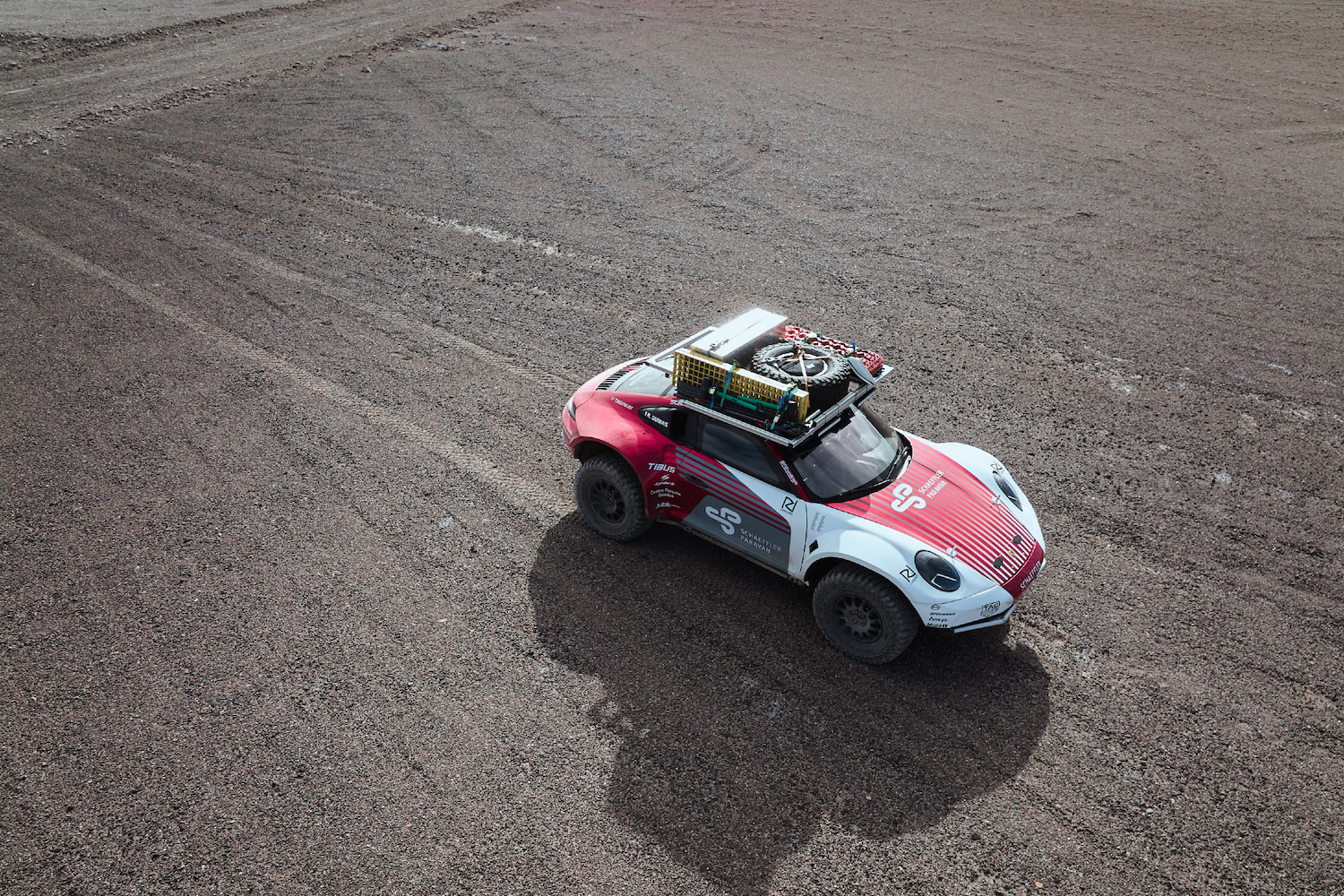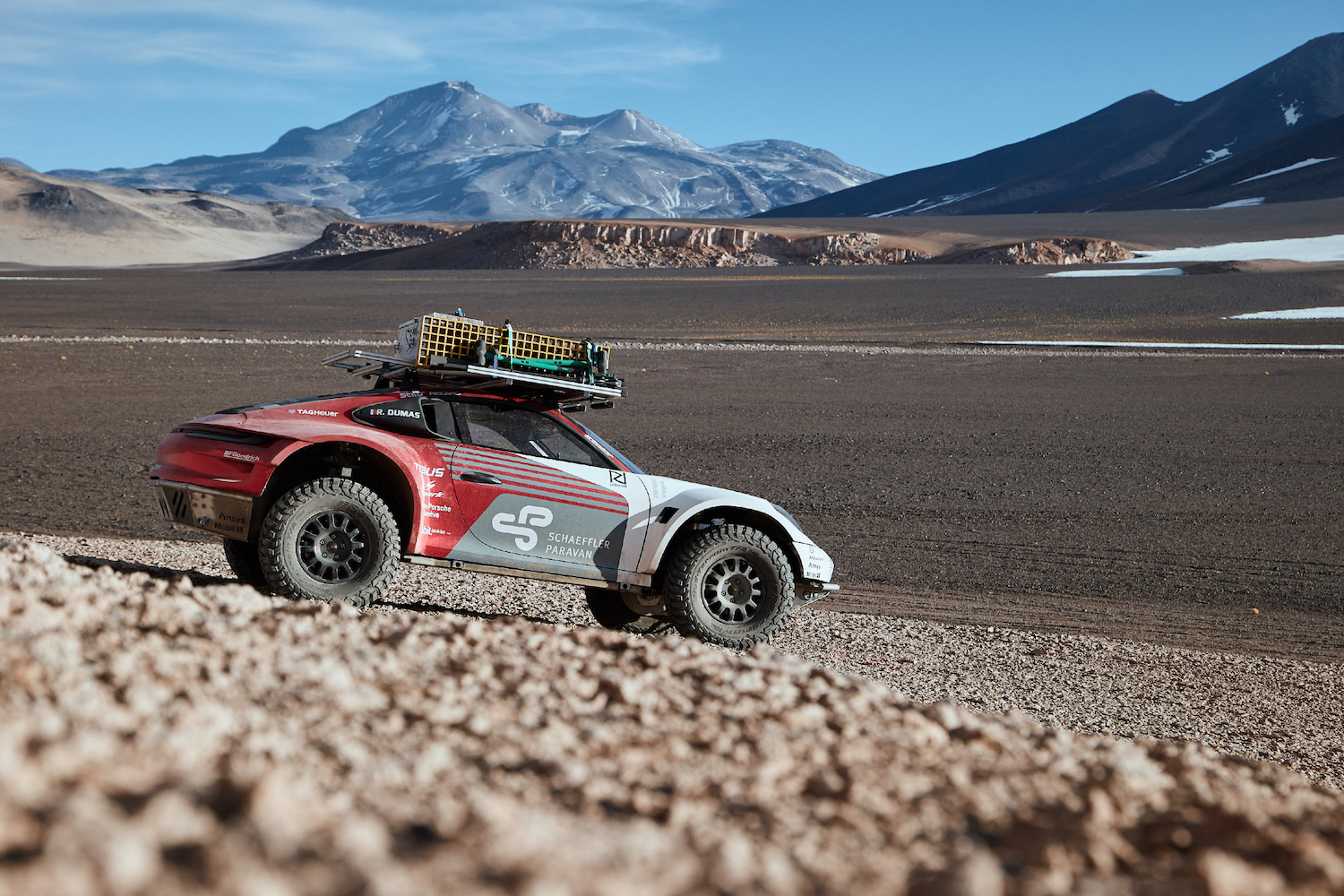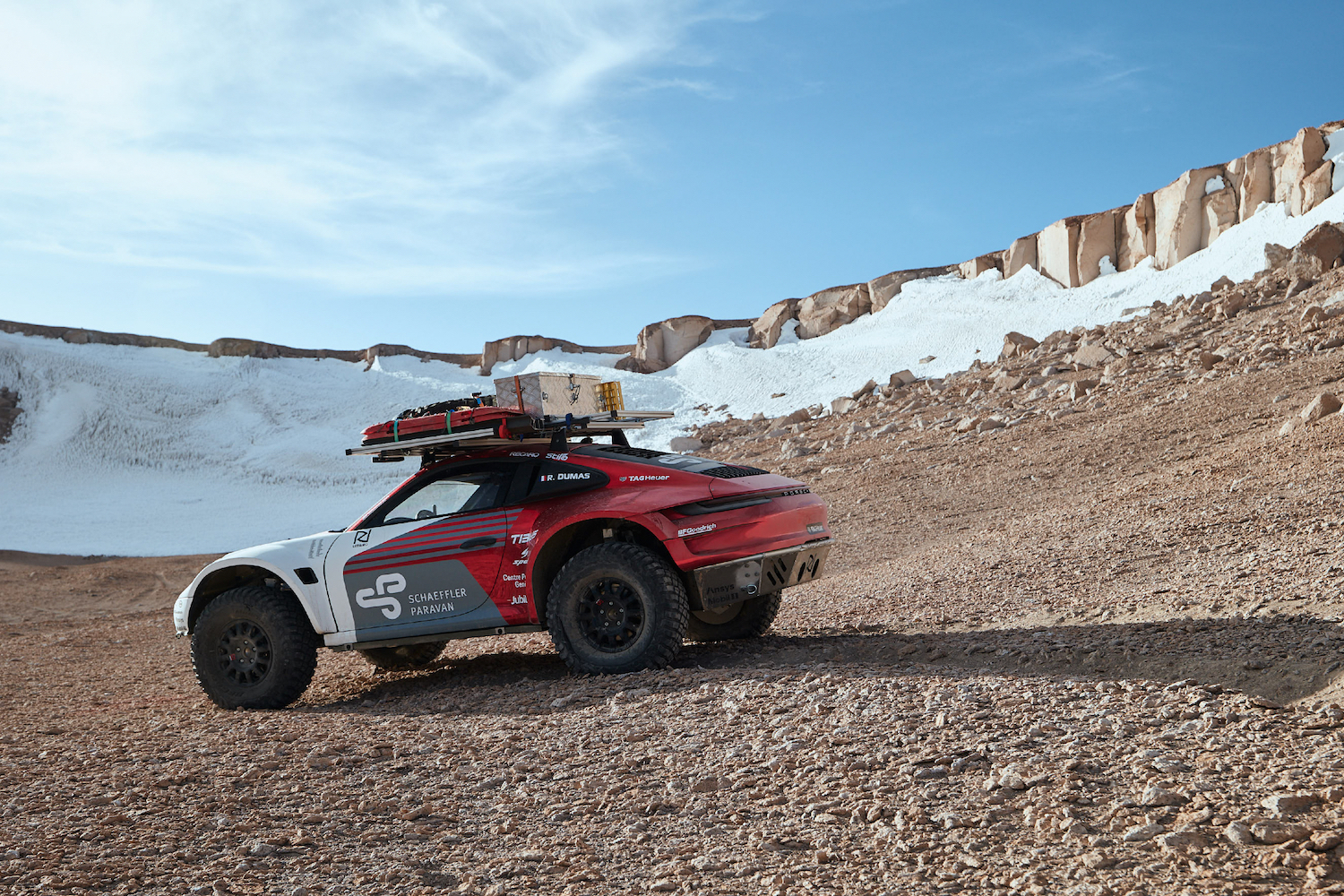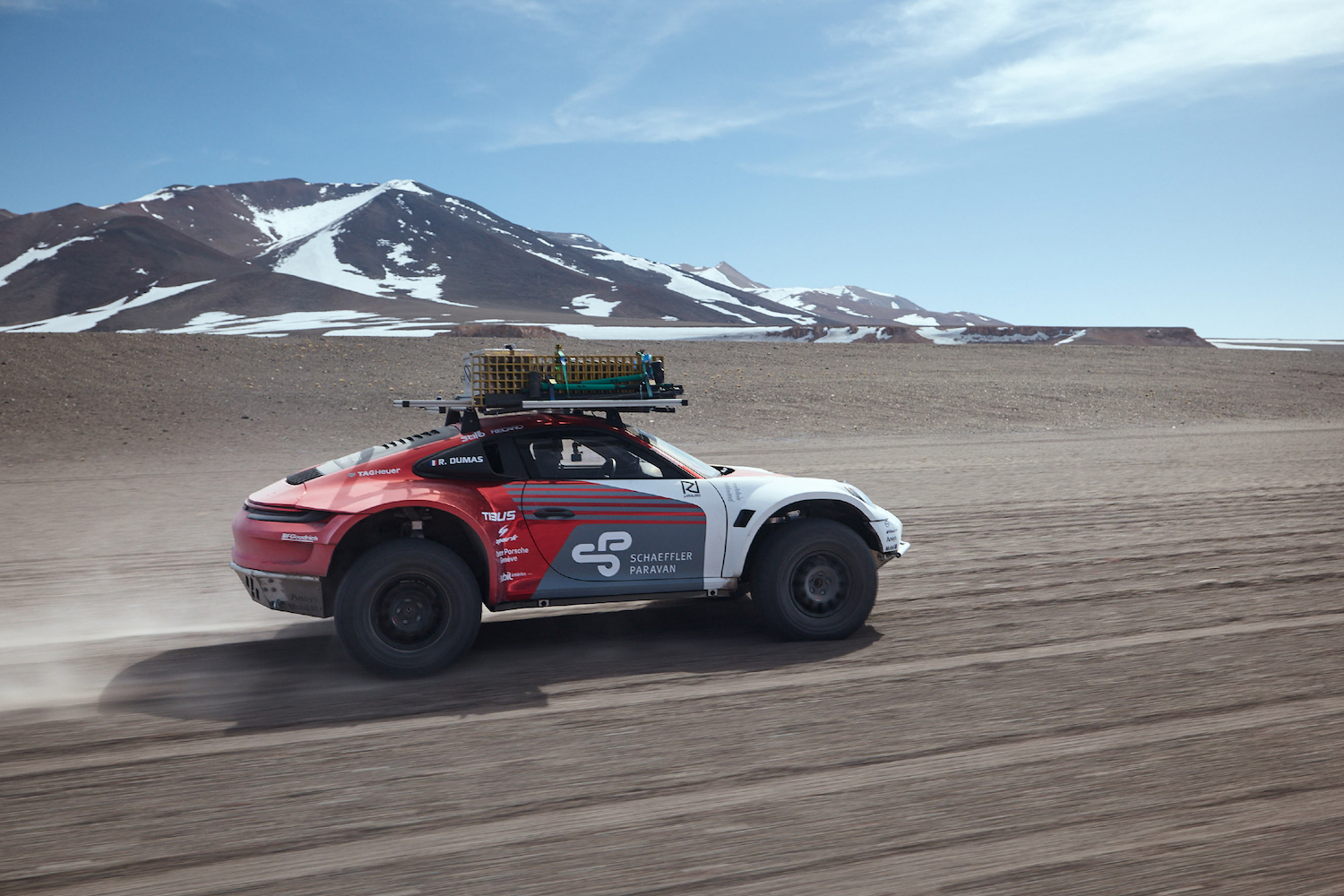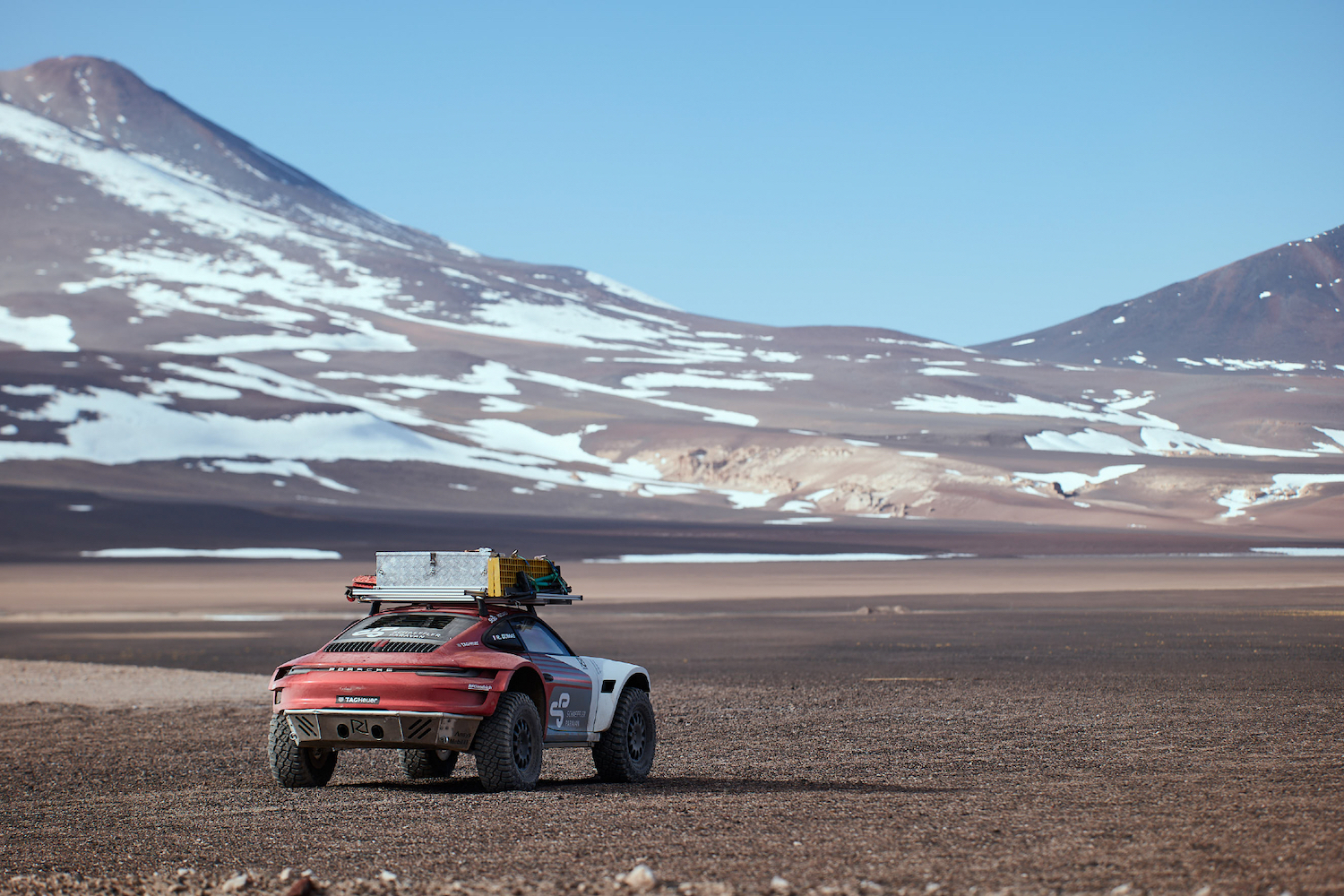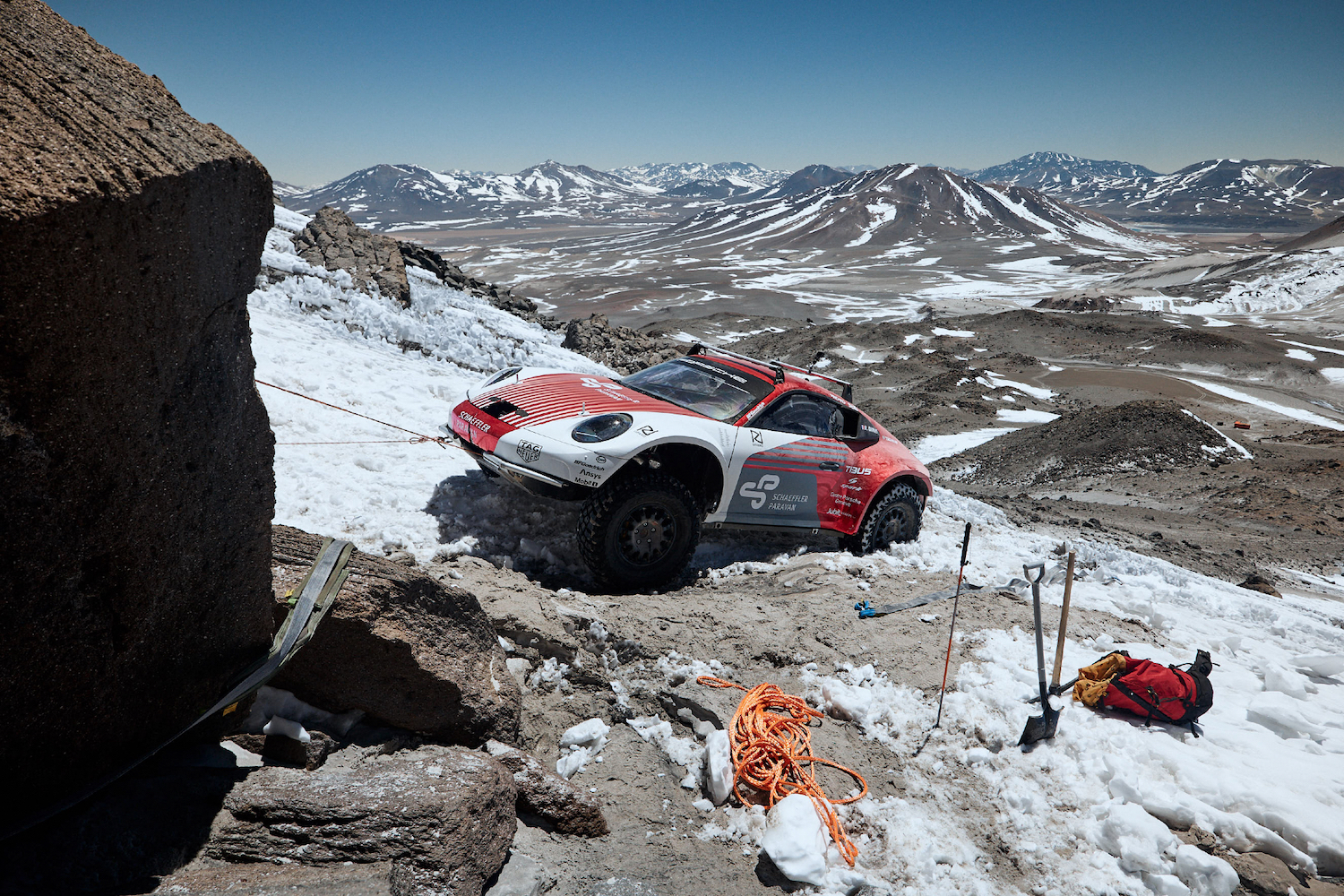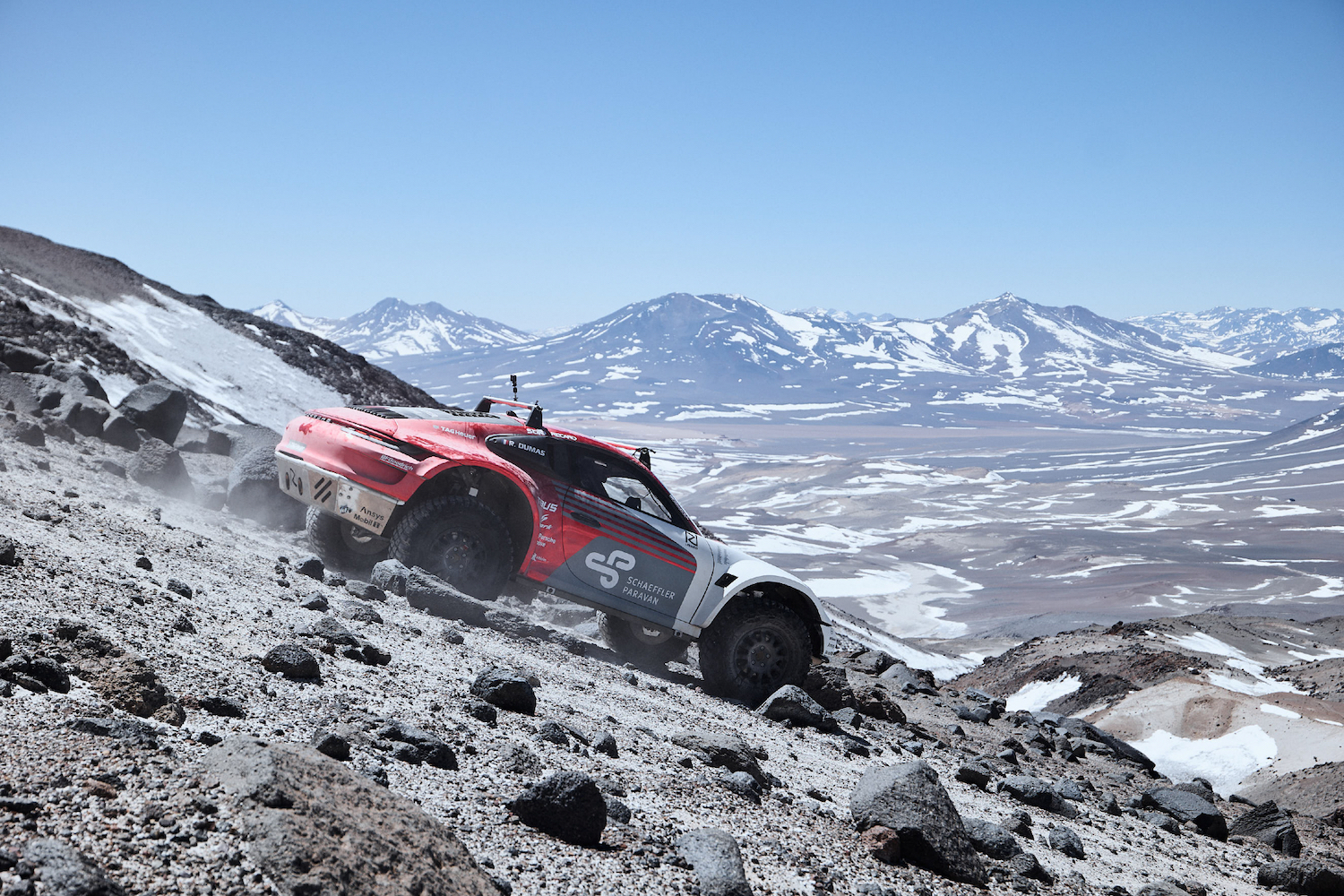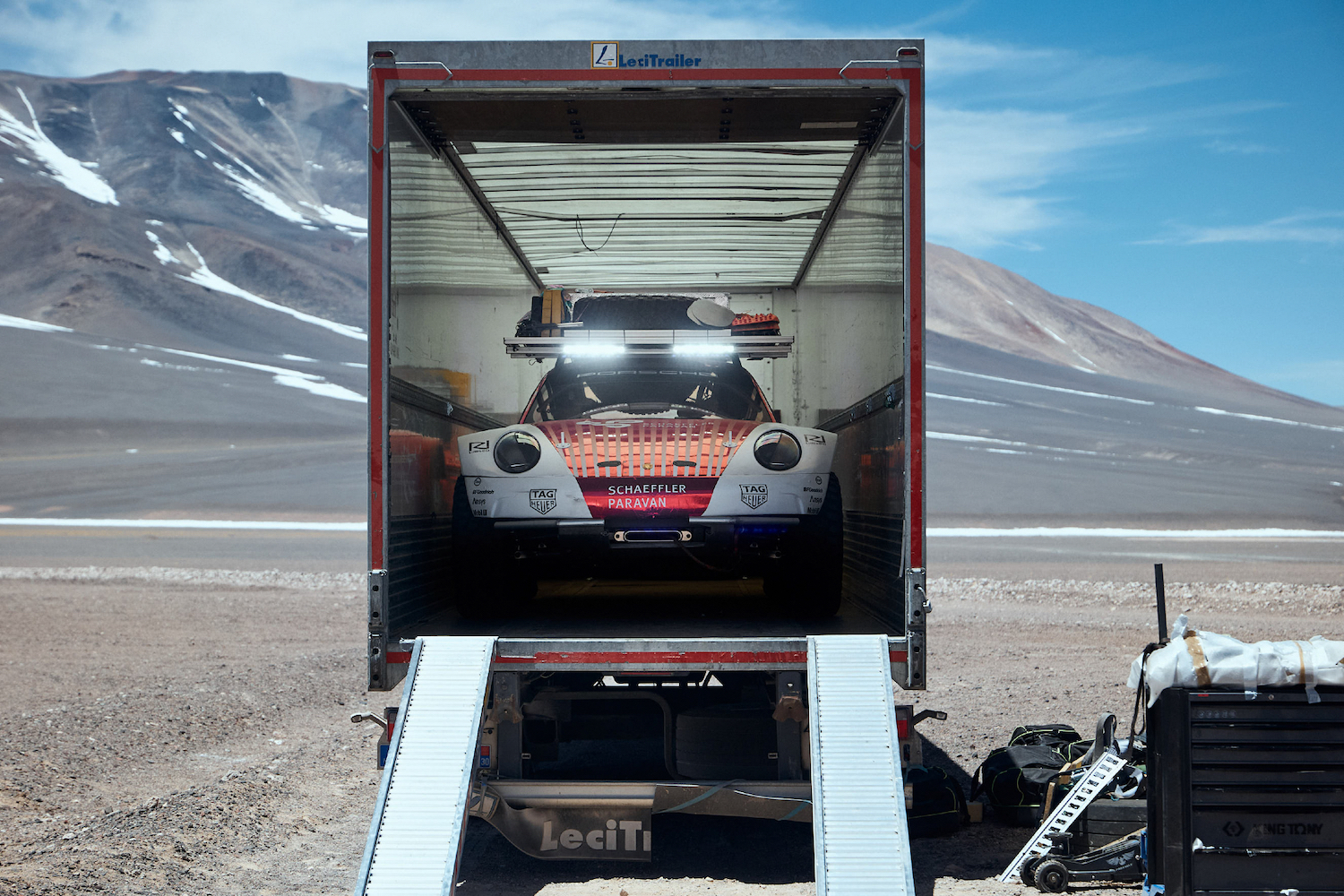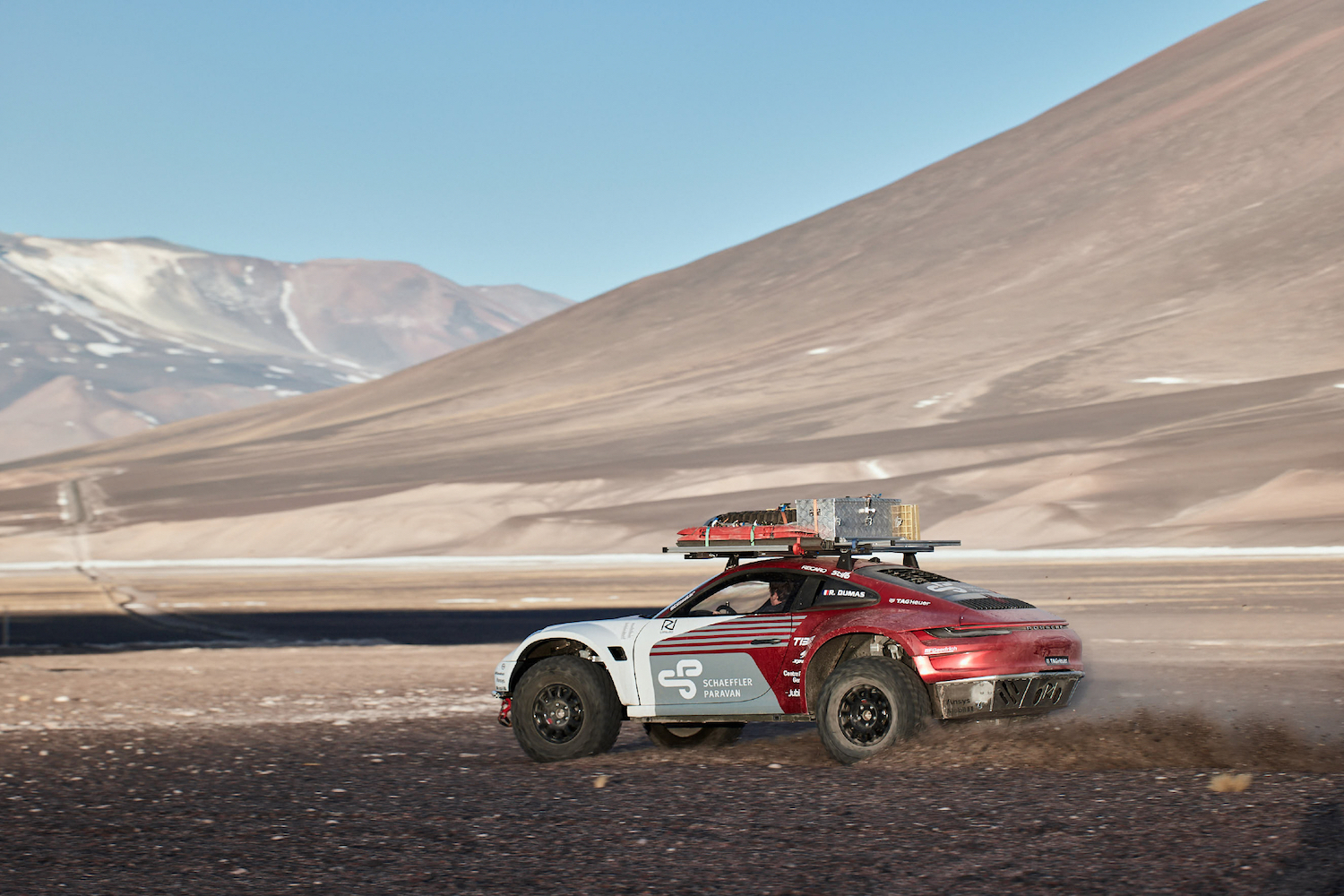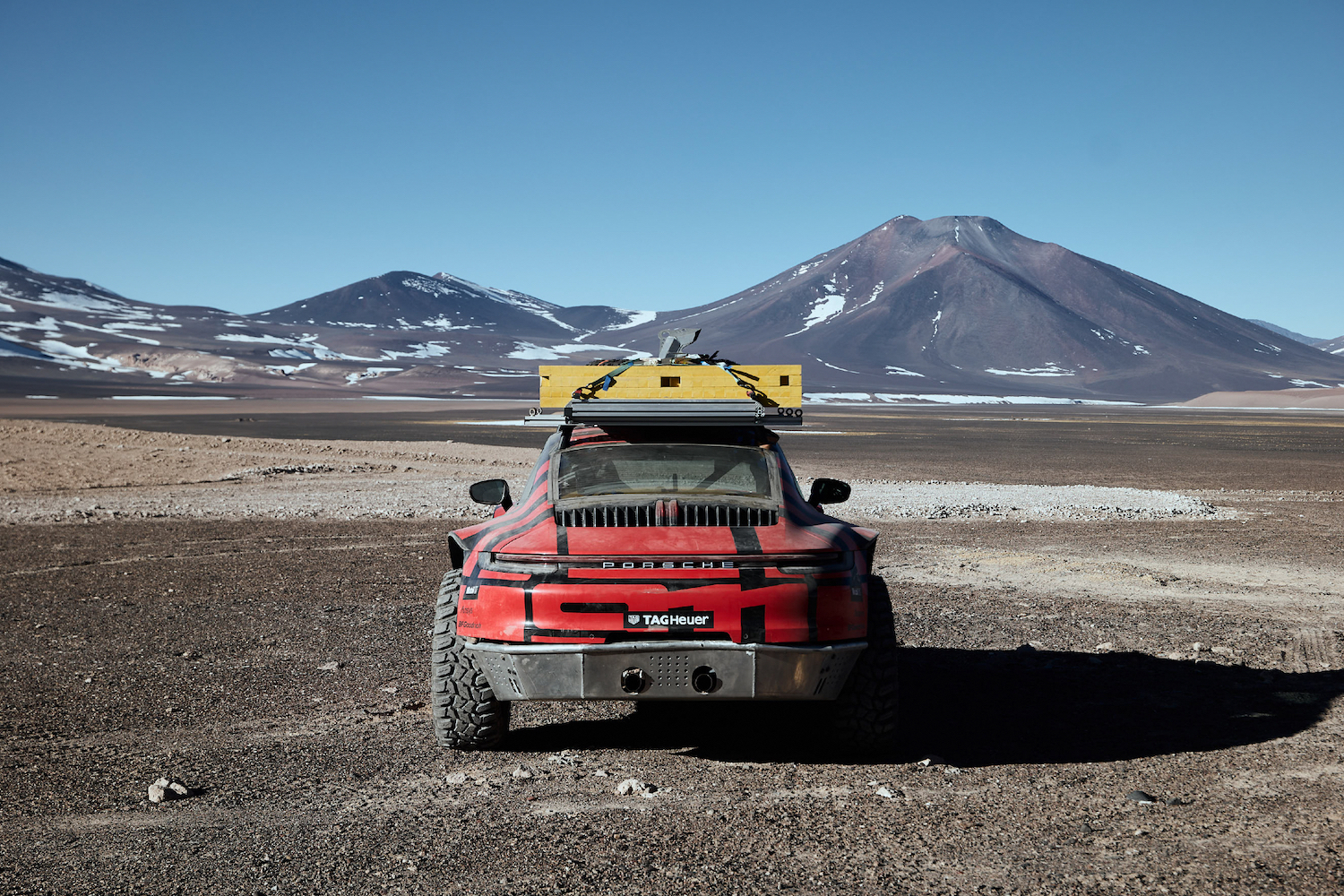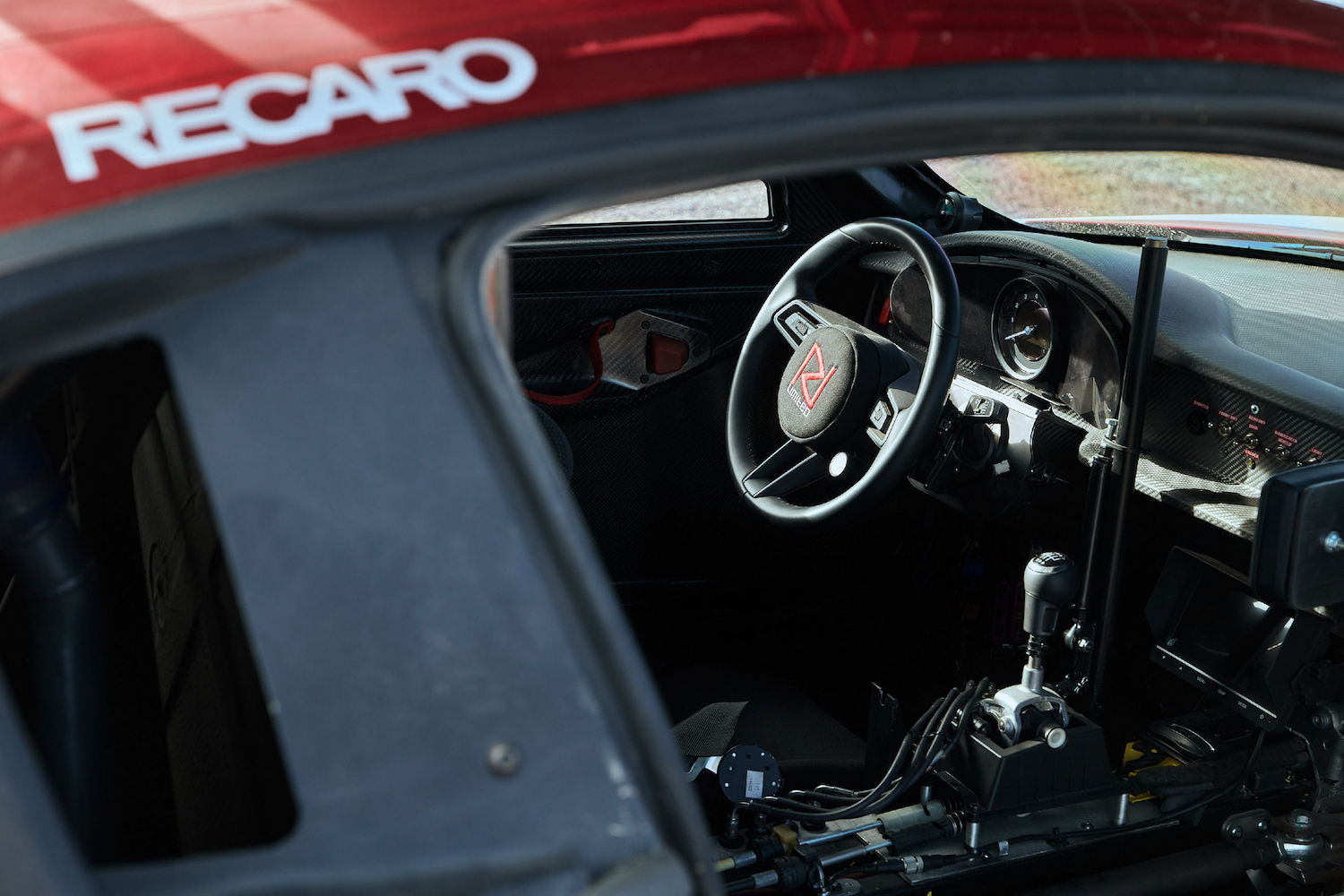A safari-style Porsche 911 checks a lot of the right boxes for what well-off enthusiasts are looking for these days: A supercar with blistering performance that can go off-roading to sample the overlanding lifestyle. The aftermarket community has taken to making lifted 911s with all-terrain tires that are meant to mimic the 911s that ran in the Paris-Dakar race in the mid-eighties. But Porsche wants to get in on the action by bringing its own style of off-roading 911 to market with a new model called the Dakar. It’s supposed to be making its debut at the Los Angeles Auto Show. While we eagerly await the upcoming 911 Dakar, Porsche shared details on a few prototypes that showcase just how capable an off-road 911 could be.
Clearly, these aren’t the types of 911s that your elderly neighbor that just retired will buy and use for their weekly jaunt around the neighborhood. These tall-riding, obscenely wide, and outrageous concepts are more like something out of a child’s mind. And to put the prototypes to the test – and show the world just how capable a 911 is when Porsche doesn’t have a budget – Porsche took the vehicles up the Ojo del Salado in Chile. For those not in the know, it’s the highest volcano in the world.
There’s a lot to dive into here, but the vehicles are based on the Carrera 4S, which comes with a turbocharged flat-six making 443 horsepower and all-wheel drive. While the vehicles are heavily modified, they retain the 911’s standard seven-speed manual transmission. Beyond these items, the 911s get equipment that makes them hardly recognizable.
Thanks to heavy-duty portal axles, the sports cars look like NBA players compared to the regular Carrera 4S with 13.7 inches of ground clearance. The transmission has been updated with lower gear ratios to be able to crawl over rough terrain better and manual locking differentials are also on hand for maximum traction. The designs are special, too, as one of the prototypes wears the same livery as the Porsche 963 LMDh race car (the one with white fenders) and the other has a look that was created by Weissach designers.
The prototypes’ designs are all meant to get the 911 over terrain where you normally wouldn’t see one of the brand’s sports cars. The ginormous fender flares help house the 12.2-inch-wide tires, a winch on the front bumper helps get the vehicles unstuck, hefty rooftop cargo rack, and the underbody protection that’s made of synthetic fibers that are resistant to heat all serve some kind of purpose. The latter is a must if you plan on scaling volcanos regularly, but the Ojo del Salado is reportedly dormant.
With endurance racer Romain Dumas behind the wheel, the Porsche team managed to get the prototypes to 19,708 feet. Temperatures at that height got down to roughly -22 degrees Fahrenheit and both the car and team were dealing with half the air that you would normally find at sea level. Along the way, the prototypes encountered ice, snow, boulders, and rocks. In other words, things a regular 911 would never see.
Sorry to get your hopes up, but there’s no way Porsche will bring production versions of these prototypes to market. Let’s just say that they’re a little too focused for a business case to be made to sell them. From what we’ve seen of Porsche’s recent 911 Dakar prototypes, they’re nowhere near as extreme as the volcano-conquering 911s, but they should still be plenty capable enough for most.
